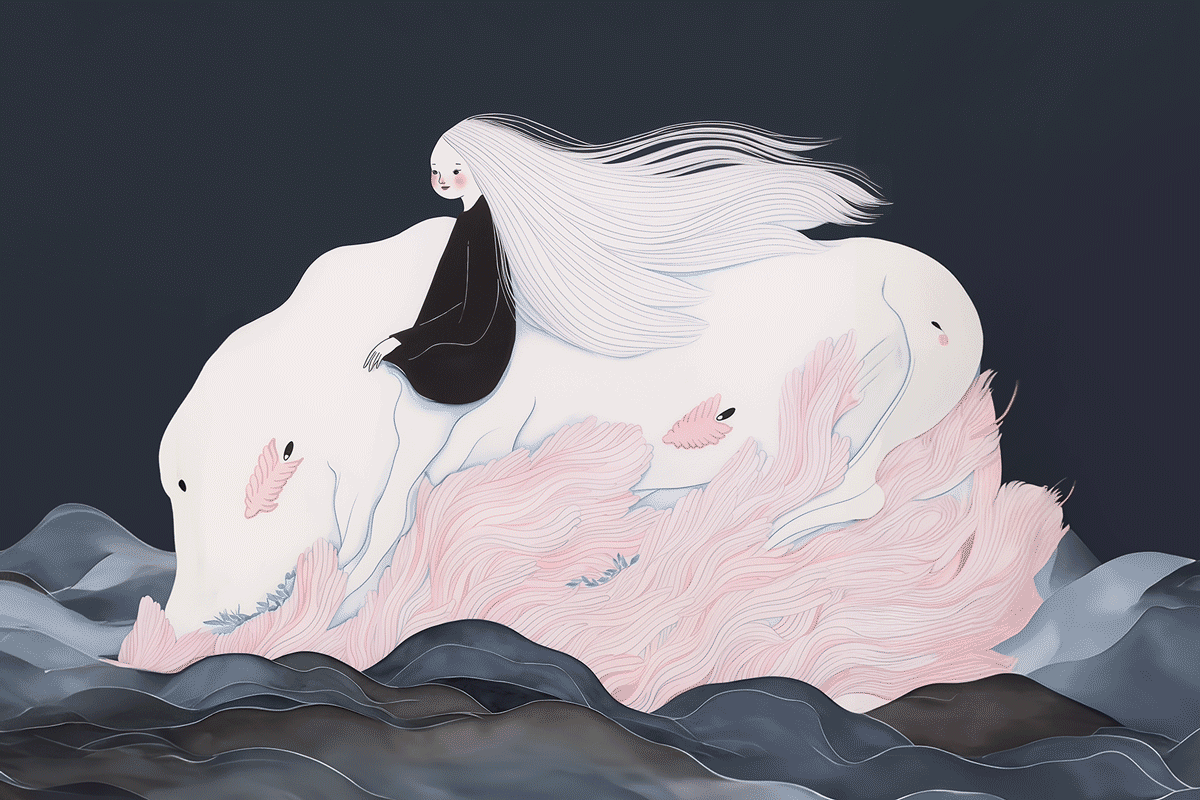Season’s Greetings
Toward a Culture of Nonviolence
Eou yadam is a collection of short stories written by Yu Mong-in, a scholar of the Joseon Dynasty of Korea (1392–1910). One of the stories is about an incredible mermaid. The main traits of the mermaid are the ability to love sincerely and the fear of being rejected because of being a fish person. Why do I bring up folktales now? Is it escapism? I genuinely feel that my eagerness to reclaim the importance of tales and myths is an attempt to find an emotional, sensorial, and verbal language to move us toward a different dimension. In my mind, those tales constitute a paideia, they embody the importance of each and every person’s emotions in the transmission of ideas, values, and practices. They counterbalance the current growth and fostering of inhumanity. While certain minority voices in very specific spheres insist on the uncompromising character of the values of diversity and equality, mainstream politics and the technological orders are spreading the alarming sensation of life being expendable. This constant and cynical trivialization of life is the reason for our current polarization, for the flourishing of defensiveness and self-justification, all of which make being together more and more difficult.
I would say this: Nonviolence and potential future democratic social orders based on public freedom remain the reason to live and practice in art and culture. What art, as well as myths and tales, stress are the fact that power is communicatively produced. This means that to be closer to the sources, the tellers, the good doers, and those that still emanate possibility and compassion (to use Mahatma Gandhi’s words), is fundamental to provoke change. Media, and social media, can move us away from listening to a real voice comforting us, from a real hand touching us, from the small but very meaningful gestures that we ceaselessly perform to help others. I am not against social media, but there should be a superabundance of meaningful transmissions or nothing. I am advocating, then, for an embedded way of acting and helping, and a precise way of judging what we are actually capable of transforming rather than a generalized culture of statements and empty actions.
I blindly believe in democracy and nonviolence. I say it bluntly. I cannot think about anything else to say, apart from the fact that being there for each other is a political act, being there for those with whom we do not share views or values is also an act of resistance. Insisting on a collective body capable of experiencing antagonism is crucial to avoid canceling each other; it is necessary for any possibility of forming a collective democratic consciousness. Art and artists are the safeguards of public engagement. Artistic freedom is sacred because it embodies the very archetype of freedom, its continuous renewal. It cannot be subsumed into normative or administrative precepts without jeopardizing the very existence of freedom. We cannot compromise artistic freedom without compromising freedom.
I just want to state my sincere awe and love to all.
Chus Martínez
AI animation by Esther Hunziker



